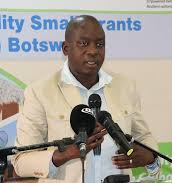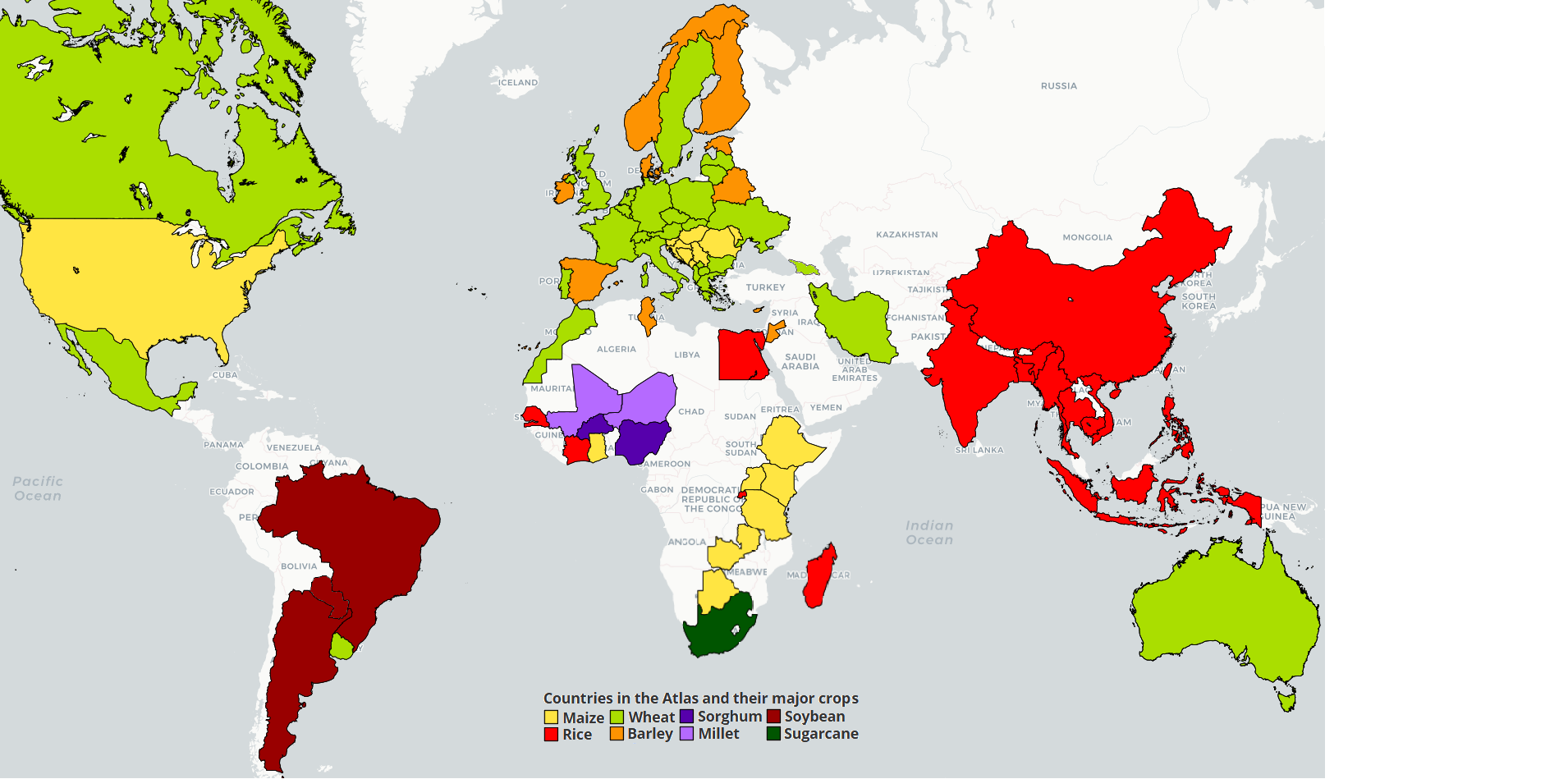 Botswana
Botswana
Description of cropping systems, climate, and soils in Botswana
The agricultural sector in Botswana plays an important role, in terms of employment and food provision. Cereals are the major grown crops in the country, of which maize is the most important one in terms of area, with around 55,000 ha, thereafter sorghum, with an area of 25,000 ha (Statistics-Botswana, 2018, 2020, 2021). Maize is mostly grown by smallholder farmers, while for sorghum around a quarter of the harvested area is taken by large scale farmers (Statistics-Botswana, 2010, 2012a, b, 2013, 2014a, b, 2016, 2018, 2020, 2021). Maize is cultivated mostly in the Southern part of the country on Luvisols, while sorghum is mostly cultivated in the North on Vertisols. Weather conditions are highly different in the two parts of the country, mean annual rainfall is about 250 mm in the South, while it is 650 mm in the North (World-Bank-Group, 2021). In summer maximum temperatures range between 30 and 35°C, and minimum between 20 and 29°C. In winter maximum temperatures range between 15 and 21°C, and minimum between 3 and 12°C (World-Bank-Group, 2021).
Approach for yield gap estimation
Harvested area
Distribution of crop area as reported by SPAM 2017 maps (IFPRI, 2019) was used.
Actual yields
Actual yields for Botswana were based on district level data obtained from Statistics Botswana (Statistics-Botswana, 2010, 2012a, b, 2013, 2014a, b, 2016, 2018, 2020, 2021).
Selected climate zones and Reference Weather Stations (RWS)
For rainfed maize and rainfed sorghum respectively two and one buffer zones were selected. These buffers were located in, respectively, two and one different climate zones. Station names were Goodhope and Kanye for maize and Pandamatenga for sorghum.
Weather data
In the selected buffers, long-term (2000-2022) daily observed weather data on minimum and maximum temperature, rainfall, relative humidity, windspeed and solar radiation were retrieved from Department of Meteorological Services, Botswana.
For station Kanye no weather data records were available, therefore we used NASA-POWER data for minimum and maximum temperature, relative humidity, windspeed and solar radiation and CHIRPS data for rainfall.
Soil data
Soil data were retrieved from both AfSIS-GYGA functional soil information of sub-Saharan Africa database (maximum effective depth of water extraction from soil by roots, maximum soil depth, volumetric soil water content available for extraction by crop roots) (Leenaars et al., 2015).
Crop modelling and crop data
Water-limited potential yields were estimated using for maize the crop growth model HybridMaize (Yang et al., 2004) and for sorghum WOFOST (Boogaard et al., 1998). The phenology in the crop models was calibrated based on growing season duration data retrieved from the country agronomist.
References
Boogaard, H., Van Diepen, C., Rutter, R., Cabrera, J., and Van Laar, H. (1998). User's guide for the WOFOST 7.1 crop growth simulation model and WOFOST Control Center 1.5.
IFPRI (2019). Spatially-Disaggregated Crop Production Statistics Data in Africa South of the Sahara for 2017. (H. Dataverse, ed.).
Leenaars, J., Hengl, T., González, M. R., de Jesus, J., Heuvelink, G., Wolf, J., van Bussel, L., Claessens, L., Yang, H., and Cassman, K. (2015). Root Zone Plant-Available Water Holding Capacity of the Sub-Saharan Africa Soil, Version 1.0. Gridded Functional Soil Information (Dataset RZ-PAWHC SSA v. 1.0).
Statistics-Botswana (2010). "2006 ANNUAL AGRICULTURAL SURVEY REPORT." Statistics-Botswana, Gaborone, Botswana.
Statistics-Botswana (2012a). "2007 AND 2008 ANNUAL AGRICULTURAL SURVEY REPORT." Statistics-Botswana, Gaborone, Botswana.
Statistics-Botswana (2012b). "STATS BRIEF: 2009 AND 2010 ANNUAL AGRICULTURAL SURVEYS PRELIMINARY RESULTS." Statistics-Botswana, Gaborone, Botswana.
Statistics-Botswana (2013). "2011 ANNUAL AGRICULTURAL SURVEY REPORT." Statistics-Botswana, Gaborone, Botswana.
Statistics-Botswana (2014a). "2012 ANNUAL AGRICULTURAL SURVEY REPORT." Statistics-Botswana, Gaborone, Botswana.
Statistics-Botswana (2014b). "ANNUAL AGRICULTURAL SURVEY REPORT 2013." Statistics-Botswana, Gaborone, Botswana.
Statistics-Botswana (2016). "ANNUAL AGRICULTURAL SURVEY REPORT 2014." Statistics-Botswana, Gaborone, Botswana.
Statistics-Botswana (2018). "BOTSWANA AGRICULTURAL CENSUS REPORT 2015." Statistics-Botswana, Gaborone, Botswana.
Statistics-Botswana (2020). "ANNUAL AGRICULTURAL SURVEY REPORT 2019 TRADITIONAL SECTOR." Statistics-Botswana, Gaborone, Botswana.
Statistics-Botswana (2021). "ANNUAL AGRICULTURAL SURVEY REPORT 2017 (Revised Version)." Statistics-Botswana, Gaborone, Botswana.
World-Bank-Group (2021). "Climate Risk Profile: Botswana."
Yang, H. S., Dobermann, A., Lindquist, J. L., Walters, D. T., Arkebauer, T. J., and Cassman, K. G. (2004). Hybrid-maize - a maize simulation model that combines two crop modeling approaches. Field Crops Research 87, 131-154.
Get access to the Atlas for advanced users
Download GYGA results
 | Please read the license information in case you are interested in using the data from the Global Yield Gap Atlas. |
| read more>> |
 Country agronomist
Country agronomist

Nnyaladzi Batisani
Botswana University of Agriculture and Natural Resource

